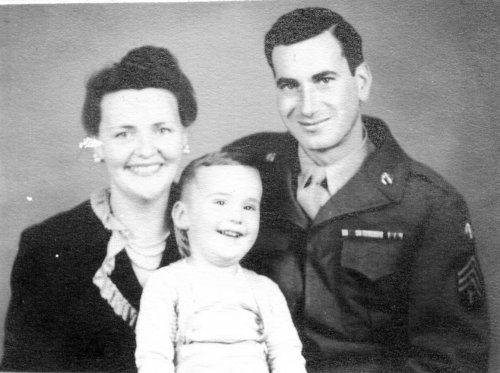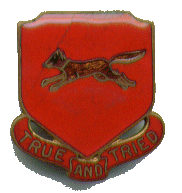|
A SOLDIER'S DIARY
Glen A. Mindling 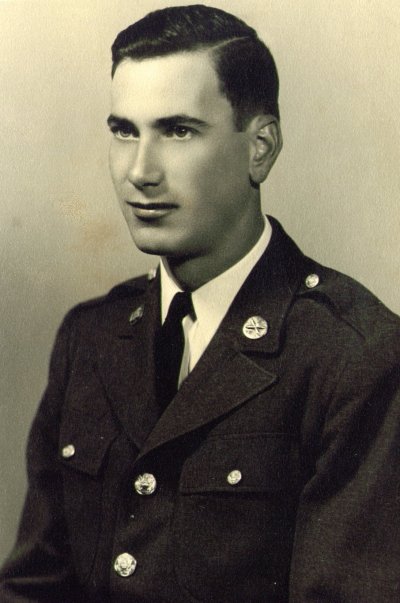

1941 - 1945 |
| Copied verbatim from Glen Mindling's "Victory Photo Record Book" |
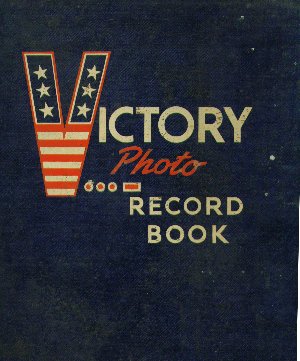 "Inducted U.S. Army, 31 July 1941, at Detroit, Michigan, under Selective Service. Shipped to Camp Grant, near Rockford, Illinois. Received uniforms and first of a series of vaccinations, intelligence tests and classification. "Inducted U.S. Army, 31 July 1941, at Detroit, Michigan, under Selective Service. Shipped to Camp Grant, near Rockford, Illinois. Received uniforms and first of a series of vaccinations, intelligence tests and classification.
Stay in Camp Grant five days and then shipped to Fort Bragg, North Carolina via troop train, arriving Replacement Center, Fort Bragg, 8 August 1941. Satisfactorily completed 13 weeks of basic training in Field Artillery Wire Communications in Fourth Platoon, Battery "B", 10th Battalion, 4th Regiment, Field Artillery Replacement Training Center, Fort Bragg, N.C. Received first furlough - Nov 6 - 12, 1941. 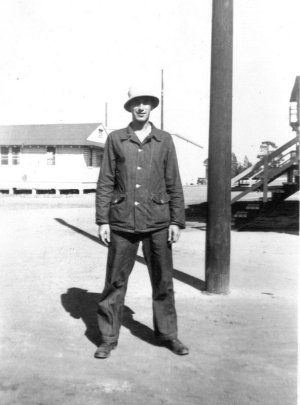
Assigned and joined HQ battery, First Battalion, 178th Field Artillery (13th Field Artillery Brigade), Fort Bragg, N.C. on or about 30 November 1941. Assigned to wire section as telephone operator and lineman. (Cpl Boyce Dean Sullivan, Wire Corporal) Received second furlough - December 16 - 24, 1941 Entire 13th Field Artillery Brigade, consisting of 13th Field Artillery Headquarters, 178th Field Artillery Regiment, 36th Field Artillery Regiment, 17th Field Artillery Regiment, and 1st Observation Battalion, changed station 26 March 1942, to Camp Blanding, Florida, (Near Jacksonville). Received third and last furlough May 12-23, 1942. promoted to Private First Class in June, 1942, and reduced again to Private
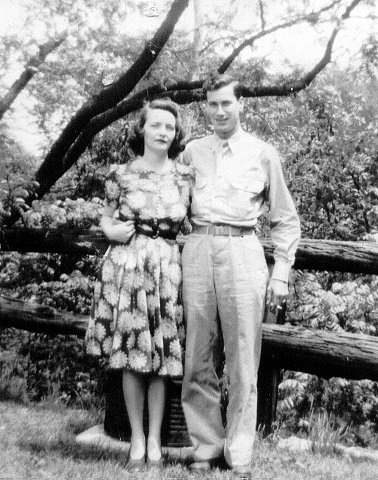 in July while on maneuvers in South Carolina for AWOL (two days). Organization called off maneuvers latter part of July 1942 to go to Fort Bragg, N.C. to crate equipment and prepare for shipment overseas. in July while on maneuvers in South Carolina for AWOL (two days). Organization called off maneuvers latter part of July 1942 to go to Fort Bragg, N.C. to crate equipment and prepare for shipment overseas. Organization went by train to Indiantown, PA, for final preparation for embarkation. Overseas Duty Sailed from Pier 13, New York Harbor, 6 August 1942, on the U.S.S. Wakefield. Spent 14 days on the water landing at Gourock, near Glascow, Scotland, on the 20th of August 1942. Travelled by train to Perham Downs, Hants, Salisbury Plains, in Southern England - continued training for combat.
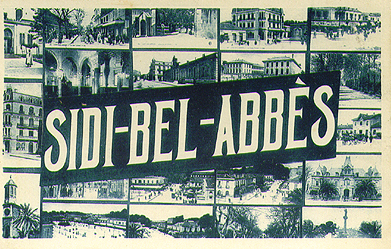 Abbes, Algeria. Practice fired on the northern edge of the Sahara Desert near Bedeaux. Did lots of bartering with Arabs for eggs, wine, fruit and nuts. Abbes, Algeria. Practice fired on the northern edge of the Sahara Desert near Bedeaux. Did lots of bartering with Arabs for eggs, wine, fruit and nuts.
Left Bivouac for long road march to combat area on 2 March 1943. Occupied several defensive positions in the vicinity of Kasserine Pass.
Received first enemy air raid 0n 12 March 1943, (5 German M.E. 109's - 1 shot down). Wrote my first letter in a fox hole. First casualties due to anti-personnel mine at anti-tank position (two killed, two wounded). Occupied first offensive position 27 March 1943 at El Guettar. Supported 16th Infantry, 7th Field Artillery, 1st Division. Received heavy artillery fire and numerous dive bombing and strafing attacks. Opposition consisted of Rommel's 10th and 15th Panzer Divisions supported by Italians. Supported 34th Division at Fondouk. 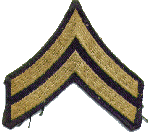 On 15 April 1943 was promoted to Corporal as message center code clerk. Battalion fired on Hill 609, Hill 575, Beja and Mateur completing the Tunisian Campaign.
On 15 April 1943 was promoted to Corporal as message center code clerk. Battalion fired on Hill 609, Hill 575, Beja and Mateur completing the Tunisian Campaign.
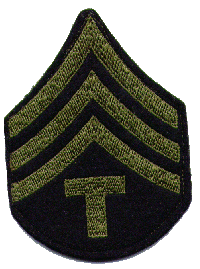
Battalion suffered several casuaties during May, June and July. Received three weeks rest period at Cecina starting 24 July 1944. Battalion was awarded the "Croix de Guerre" with vermillion star by French General Juin. Returned to line on 16 August 1944 in support of 85th Division. Continued on drive through Florence. Encountered bitterest enemy opposition and trying terrain on attack of tyhe "Gothic Line". Supported the 85th, 88th, and 91st Divisions firing on enemy strong points in the
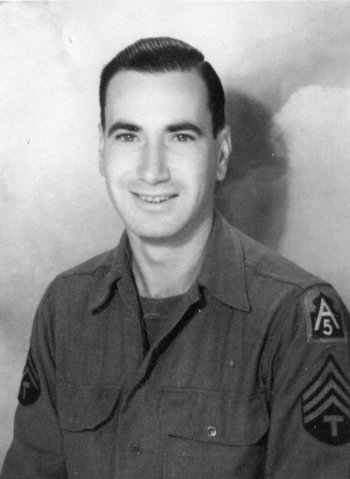 In March 1945, I was recommended to return to the United States for 30 day leave on the "Temporary Duty" and rotation plan of the Army. Recommendation was approved and by authority of 5th Army Headquarters, left the 178th Field Artillery Battalion on the 28 March 1945 travelling to Pisa by truck and from Pisa to Naples by freight car (20 men to a car). Went through processing for return to USA and sailed from Naples on 10 April 1945. Arrived Boston, Massachussetts, USA, on 20 April 1945.
In March 1945, I was recommended to return to the United States for 30 day leave on the "Temporary Duty" and rotation plan of the Army. Recommendation was approved and by authority of 5th Army Headquarters, left the 178th Field Artillery Battalion on the 28 March 1945 travelling to Pisa by truck and from Pisa to Naples by freight car (20 men to a car). Went through processing for return to USA and sailed from Naples on 10 April 1945. Arrived Boston, Massachussetts, USA, on 20 April 1945.
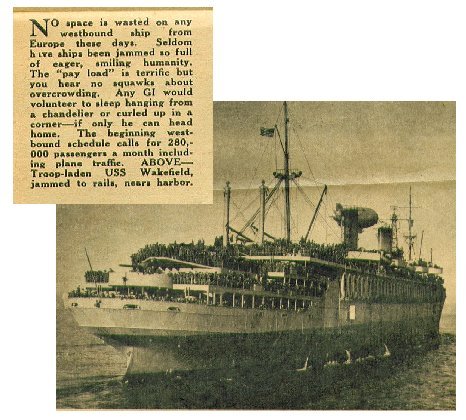 Returned on the U.S.S. Wakefield, same ship I originally went overseas on in August 1942.
Returned on the U.S.S. Wakefield, same ship I originally went overseas on in August 1942.
Received more processing at Camp Miles Standish, Mass, and Fort Bragg, N.C. On April 23, 1945, left Fort Bragg on
In the meantime, the German forces had capitulated and VE Day had come to pass. The Army had also announced a plan for demobilization, discharging men with 85 points or more. Returning to Fort Bragg on 9 June 1945, my service record was checked, points determined, and I was sent to the Separation Center of that camp where I received my honorable discharge on 19 June 1945. |
|
|
Service History
|
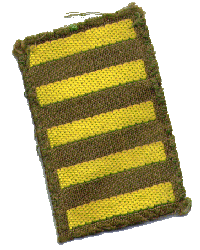
|
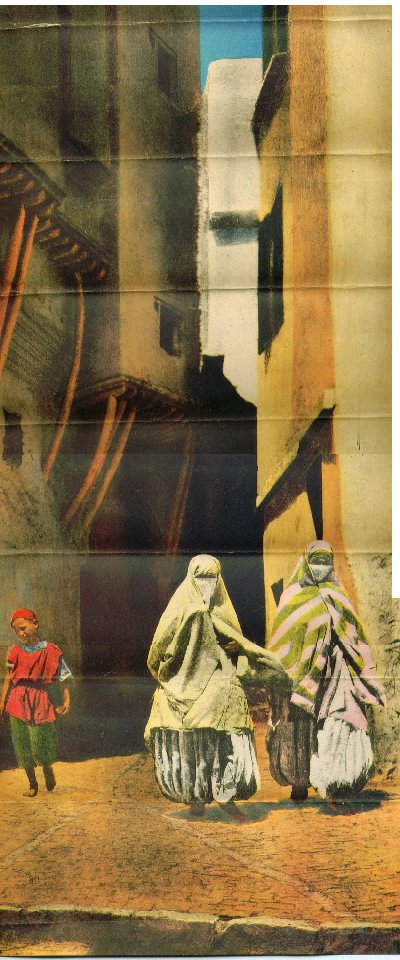 Battalion remained in bivouac near Bove, Algeria for nearly a month following the defeat of the German and Italian forces in N. Africa. Boarded LSTs at Tunis and sailed for Sicily on 16 July 1943, landing two days later on beach at Gela. Supported 45th Division and shortly afterwards the first Division.
On 1 Aug 1943, HQ battery suffered it's most costly enemy air raid. (Twenty casualties, three of whom were killed). Two close buddies, Boyce Dean Sullivan and Ned Smith were killed here, near Nicosia, Sicily from fragments of anti-personnel bombs dropped by six F.W. 190's. Sgt Campbell, Message Center, was seriously wounded and I took over his duties. Much jeep driving, very little sleep, and 31 consecutive
Battalion remained in bivouac near Bove, Algeria for nearly a month following the defeat of the German and Italian forces in N. Africa. Boarded LSTs at Tunis and sailed for Sicily on 16 July 1943, landing two days later on beach at Gela. Supported 45th Division and shortly afterwards the first Division.
On 1 Aug 1943, HQ battery suffered it's most costly enemy air raid. (Twenty casualties, three of whom were killed). Two close buddies, Boyce Dean Sullivan and Ned Smith were killed here, near Nicosia, Sicily from fragments of anti-personnel bombs dropped by six F.W. 190's. Sgt Campbell, Message Center, was seriously wounded and I took over his duties. Much jeep driving, very little sleep, and 31 consecutive 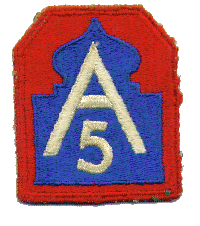 days of "C" rations. Following the end of the Sicilian campaign, we bivouaced 30 miles from Palermo where I enjoyed my first plane ride in a piper cub (Field Artillery Observation) plane - S/Sgt Jackson guided (Piloted).
On 3 September 1943 my Battalion fired 1,374 rounds across the Straits of Messina onto the mainland of Europe (The toe of Italy in support of British 8th Army crossing.) Then returned to bivouac areas. Battalion was re-equipped with 155 MM Howitzers (M1) replacing the old "Box Trail" Howitzers. Left Palermo, Sicily on LSTsand landed on a beach near Salerno, Italy on 22 September 1943. Supported 3rd Division in drive on Naples. Supported the 34th, 45th, and 3rd Divisions during first month in Italy.
days of "C" rations. Following the end of the Sicilian campaign, we bivouaced 30 miles from Palermo where I enjoyed my first plane ride in a piper cub (Field Artillery Observation) plane - S/Sgt Jackson guided (Piloted).
On 3 September 1943 my Battalion fired 1,374 rounds across the Straits of Messina onto the mainland of Europe (The toe of Italy in support of British 8th Army crossing.) Then returned to bivouac areas. Battalion was re-equipped with 155 MM Howitzers (M1) replacing the old "Box Trail" Howitzers. Left Palermo, Sicily on LSTsand landed on a beach near Salerno, Italy on 22 September 1943. Supported 3rd Division in drive on Naples. Supported the 34th, 45th, and 3rd Divisions during first month in Italy.
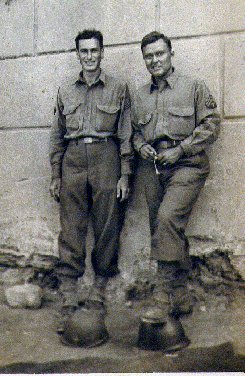 Suffered nine casualties from one enemy round hitting house occupied by gun section in "A" Battery. After 152 consecutive days of combat, the Battalion took a rest period near Venafro and was redesignated the 178th Field Artillery Battalion. During the Autumn we had also become "Fifth Army Troops" under command of Mark W. Clark. Supported the French during month of March and spent
Suffered nine casualties from one enemy round hitting house occupied by gun section in "A" Battery. After 152 consecutive days of combat, the Battalion took a rest period near Venafro and was redesignated the 178th Field Artillery Battalion. During the Autumn we had also become "Fifth Army Troops" under command of Mark W. Clark. Supported the French during month of March and spent
